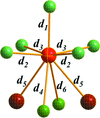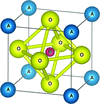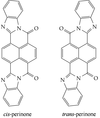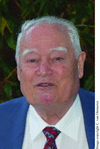issue contents
June 2016 issue

Cover illustration: A view of the crystal structure of the tetragonal perovskite PbTiO3 at 298 K, with displacement ellipsoids drawn at the 90% probability level. The perovskite is the subject of a high-temperature single-crystal X-ray diffraction study in the temperature range 298-928 K. Deviations from linearity in the Debye-Waller factors are observed before the onset of the tetragonal ![[rightwards arrow]](/logos/entities/rarr_rmgif.gif) cubic phase transition at around 753 K [see Yoshiasa et al. (2016). Acta Cryst. B72, 381-388].
cubic phase transition at around 753 K [see Yoshiasa et al. (2016). Acta Cryst. B72, 381-388].
research papers










Biologically relevant spiro[indolin-2-one-3,4′-pyrano[2,3-c]pyrazoles] derivatives were synthesized by a simple, energy-efficient and chemically sustainable method under ambient conditions with excellent yields, and the molecules were fully studied with regard to their detailed spectral and X-ray crystallographic behavior.






 access
access







 access
access



 journal menu
journal menu































